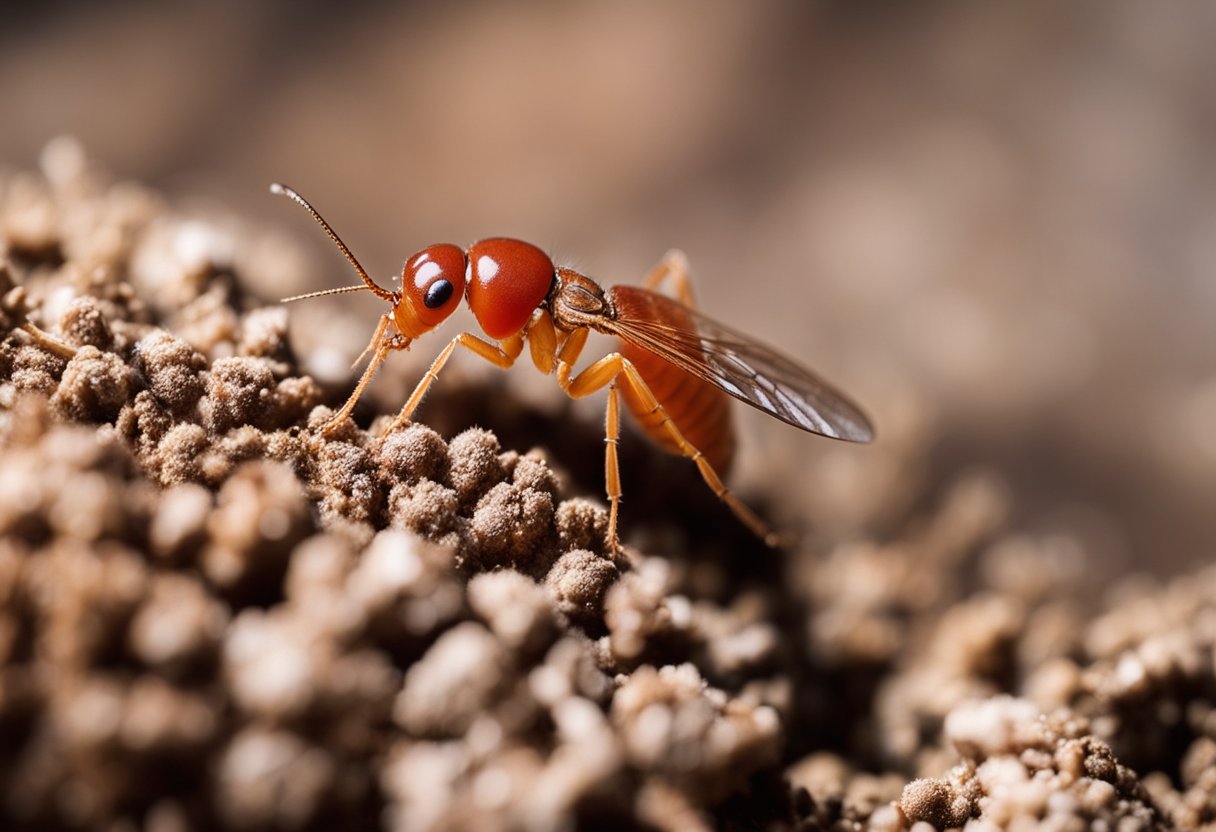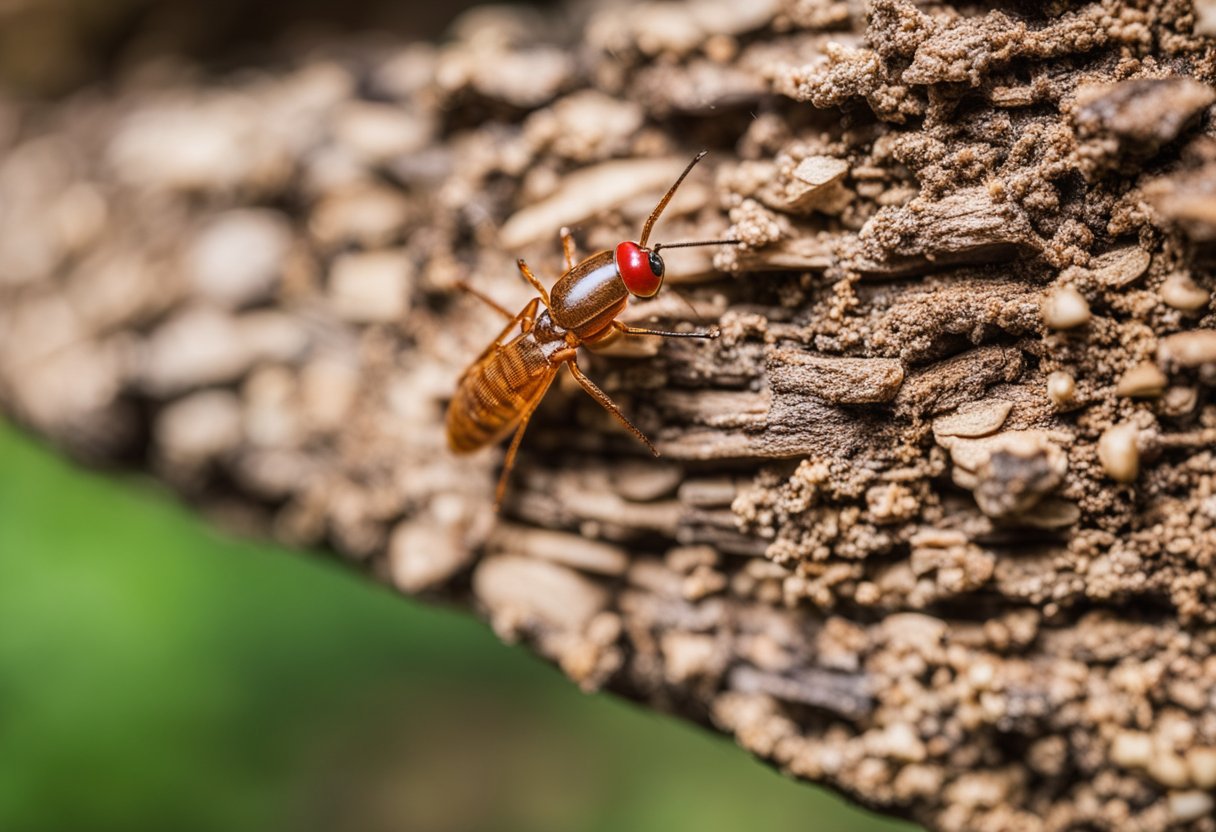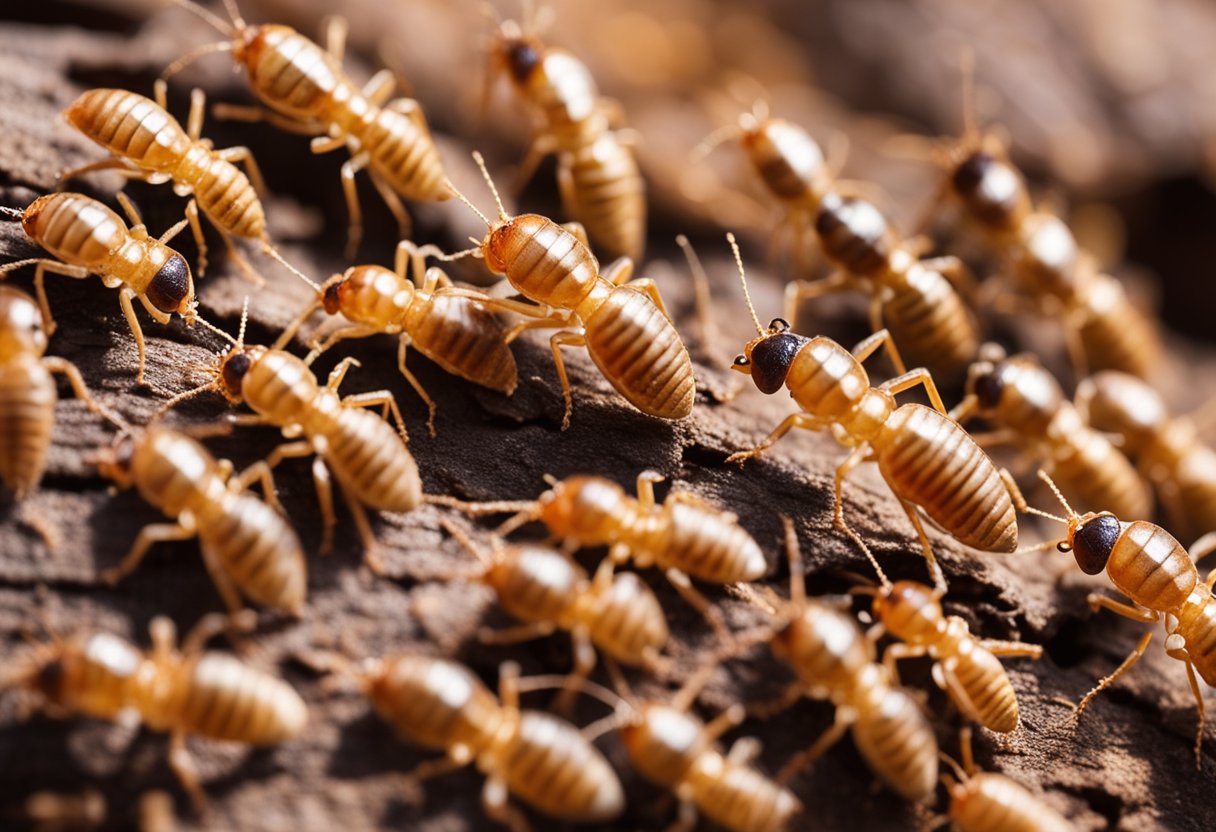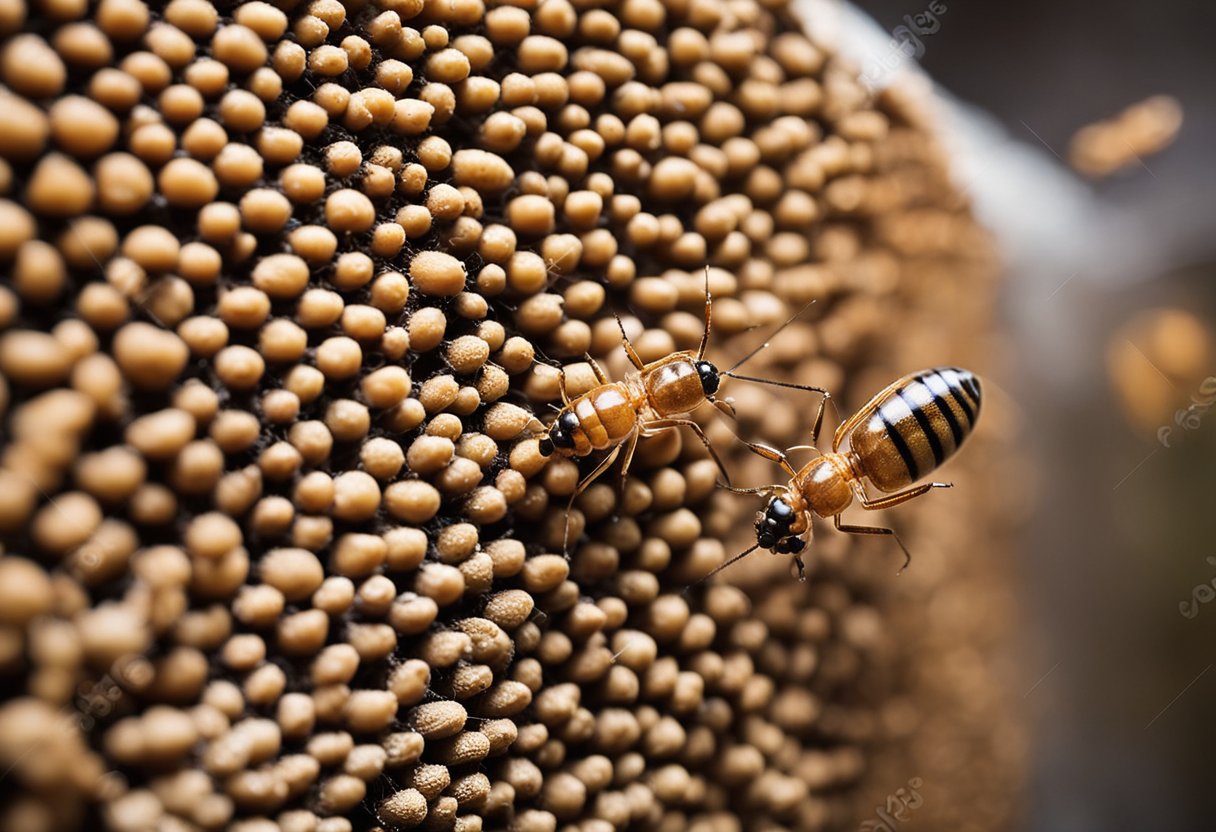Termites are common household pests that can cause extensive damage to your home’s wooden structures. These tiny insects can silently destroy your property, resulting in costly repairs if not detected and treated in a timely manner. In search of effective pest control solutions, many have wondered: can red hit kill termites?

Red hit is known for its potency against various types of insects, and it has been recognized as a possible termite control solution. By understanding how red hit works, it’s possible to determine its effectiveness in dealing with termite infestations. However, it’s important to remember that managing a termite infestation goes beyond just using a chemical treatment; you should also be aware of the signs of termites and take proper preventative measures.
Key Takeaways
- Red hit is a potential solution to control termite infestations
- Early identification of an infestation is crucial to minimize damage
- Combining chemical treatments with preventative measures is the best way to manage termites
Understanding Red Hit as a Termite Control Solution

How Red Hit Works Against Termites
Red Hit is a chemical solution you can use for termite control. It contains direct chemicals that are specifically designed to kill termites upon contact. To apply Red Hit, you can use it as a spot treatment on areas where termites are present in your home. The time required for Red Hit to take effect depends on the size of the infestation and how well it is applied.
When using Red Hit, it is essential to wear proper protection, such as a mask and gloves, to avoid direct contact with the chemicals. Mixing Red Hit with mild dish soap can help the solution adhere better to surfaces, increasing its effectiveness.
Effectiveness and Limitations
Red Hit can be an effective solution for killing termites when applied correctly. However, it is important to be aware of some limitations when using this product. While Red Hit is designed to kill termites on contact, it may not eliminate an entire colony. Termites can have complex nesting structures, making it challenging to reach all areas of the infestation with spot treatment alone.
To improve your termite control efforts, consider combining Red Hit with other treatment methods, such as baiting systems or professional treatments. This will increase the chances of eliminating the entire termite colony and protecting your home from further damage.
It’s essential to monitor the effectiveness of the Red Hit treatment regularly and reapply as needed. Remember to stay confident and knowledgeable in your approach to termite control, and don’t hesitate to seek professional help if you’re uncertain about the best course of action for your specific situation.
Identifying and Addressing Termite Infestations

When it comes to termites, early detection and prompt action are crucial in preventing structural damage to your property. Termites live in colonies and can be broadly classified into three types: subterranean, drywood, and dampwood termites. Each type thrives in different environments and requires specific methods of treatment.
Subterranean termites prefer moist environments and mainly reside in soil. They build their colonies underground, and you can find distinctive mud tubes leading from the soil to wooden structures nearby. These termites cause the most damage as they can access the interior of your home through these tubes.
Drywood termites prefer drier conditions and generally don’t require contact with the soil. These termites often infest wooden structures directly, such as furniture and structural wood. Their colonies are smaller compared to subterranean termites, but the damage they cause can be just as severe.
Dampwood termites are attracted to moist, decaying wood and are least likely to cause structural damage unless the building has a serious moisture issue.
To identify and address termite infestations, look for the following signs:
-
Discarded wings: Termites swarm when trying to establish new colonies. After finding a suitable nesting location, they shed their wings. Watch out for small piles of discarded wings around windows, doors, and other entry points.
-
Termite droppings: As they consume wood, drywood termites produce distinct pellet-like droppings called frass. If you spot mounds of these droppings near wooden structures, it’s a strong indicator of an infestation.
-
Hollow-sounding or damaged wood: Tap on wooden structures like walls, doors, and furniture to gauge their sound. If they produce a hollow noise or appear visibly damaged, it might be due to termite infestation.
-
Mud tubes: As mentioned earlier, subterranean termites build mud tubes to travel between the colony and their food source. These tubes are typically found along walls and foundations and are a clear sign of subterranean termite activity.
If you identify any of these signs of termites in your property, consult a professional exterminator immediately to assess the situation and recommend the most suitable treatment.
To prevent future infestations, clear any debris or dead wood near your home, repair leaking pipes to avoid moisture accumulation, and use pesticides or barriers around your property’s perimeter when applicable to deter termites from intruding. It’s also essential to schedule regular pest inspections by professionals to ensure your property remains termite-free.
Other Methods and Preventative Measures

In your quest to get rid of termites, you can try various methods and preventative measures. One popular method is the use of termite baits and bait stations. Place these strategically around your property, especially near wood debris and mud tubes – common signs of subterranean termite infestations. Routine inspections can help you determine the effectiveness of the bait and catch any new infestations early.
Regularly cleaning your gutters and ensuring proper drainage away from your home is crucial. Downspouts and vents should be free of obstructions, and grading around your house should channel water away from the foundation. This helps to eliminate moist soil in which termites thrive.
Sealing any cracks and gaps around your home can prevent termites from entering. Use caulk or steel mesh to seal openings around pipes, gaps in your foundation, and other points of entry. Regularly inspect your exterior for mud tubes or other signs of termite presence, and remove potential food sources such as firewood, tree stumps, and wood debris.
Chemical treatments like termiticides and insecticides, such as fipronil, imidacloprid, and permethrin, can create a barrier around your home, discouraging termite entry. Professional pest control experts can apply liquid treatment to the soil or use termite-resistant wood treatments for a stronger defense against infestations.
You can also explore alternative methods like using boric acid, essential oils, or nematodes. Borate treatment on wood offers long-lasting protection against termites, while applying orange oil on affected areas can help kill termites on contact. Beneficial nematodes can be introduced into the soil, where they parasitize and ultimately kill termites.
Lastly, make sure to implement regular maintenance checks in your entire property. This includes checking for leaks in pipes, ventilation problems, decay or damage to wood structures, and proper storage of firewood away from your home. By following these preventative measures, you can protect your home from unwanted termite infestations and avoid the cost of expensive termite treatments and exterminator services.

